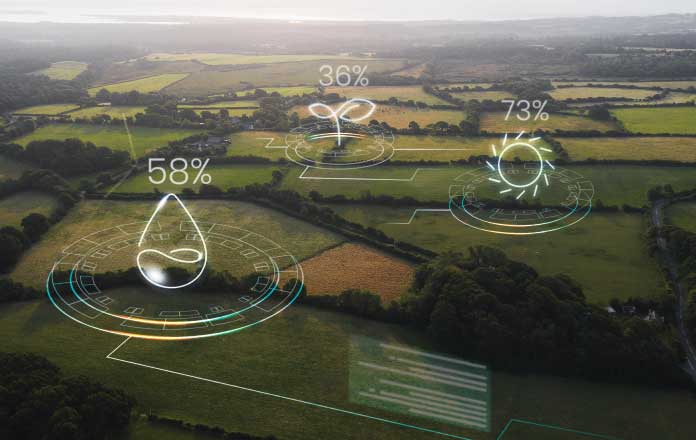Agricultural technology or Agritech, aims to enhance effectiveness, sustainability, and productivity by fostering innovative farming. Farming innovation is essential as the global population expands and ecological challenges become more prominent. Agritech is committed to boosting agricultural performance, cultivating a lasting food manufacturing system, assuring food safety, and advertising environmental preservation.
Agritech Business
1. Accuracy Farming
Agriculture uses modern technologies such as drones, sensing units, and GPS to transform farming approaches. Farmers can get detailed field data using this method, including soil problems, plant health and wellness, and dampness degrees. With drones, multispectral video cameras can take aerial images, aiding farmers in identifying areas calling for focus. Soil sensing units can track moisture levels and nutrient material, ensuring crops receive the essential water and fertilizers.
Agriculture uses substantial advantages by targeting water, plant foods, and pesticides in specific areas. This method not only boosts crop monitoring but also minimizes environmental impacts. Accurate farming allows for more reliable parasites and diseases, leading to healthier crops and decreased dependence on chemical therapies.
2. Vertical Farming
Upright farming is an innovative option to address food safety issues, especially in metropolitan areas where space is restricted. This method involves growing crops in up-and-down piled layers, often in controlled interior atmospheres. By utilizing hydroponic or aeroponic systems, upright ranches can expand plants without soil, utilizing nutrient-rich water services instead.
The up-and-down farmed setting supplies a stable and predictable environment, allowing undisturbed plant cultivation 365 days. This controlled setting leads to raised harvests and consistently top-quality produce. In addition, the vertical technique minimizes the necessity for chemical pesticides and herbicides, generating healthier, much safer, and more secure food alternatives. By situating ranches in urban areas, the distance between manufacturing and usage is minimized, reducing logistical costs and the carbon impact of food transportation.
3. Agri-Fintech
Agriculture and finance, known as “Agri-fintech,” is how farmers access financial solutions from banks or NBFC, usually forgetting smallholder farmers because of perceived risks and the absence of credit rating. Agri-fintech systems bridge this space by electronically supplying farmers access to credit scores, insurance coverage, and market information.
These systems use data analytics and artificial intelligence to evaluate the credit reliability of farmers based on their farming practices and performance. This enables farmers to protect financings for purchasing seeds, devices, and other inputs. Furthermore, agri-fintech services use insurance policy products that secure farmers against crop failings brought on by damaging climate conditions or parasites. Accessibility to real-time market details likewise encourages farmers to make enlightened decisions about when and where to offer their fruit and vegetables, maximizing their earnings.
4. Smart Watering Solutions
Efficient water administration is critical in agriculture, specifically in water shortage areas. Smart irrigation systems by the Internet of Things (IoT) use a solution that maximizes water use and boosts crop efficiency. These systems utilize sensing units to keep track of soil wetness degrees, weather, and plant health in real time.
Based on the accumulated information, clever watering systems immediately adjust the watering timetables and total up to satisfy the particular requirements of the plants. This accurate watering reduces water waste and ensures that plants receive the optimum amount of hydration. Furthermore, smart irrigation can be incorporated with weather forecasting solutions to prepare for rains, readjust watering as necessary, and preserve water resources.
Conclusion
The Agritech business ideas in this post-precision agriculture, vertical farming, agri-fintech, and smart watering systems-show the transformative capacity of innovation in the agricultural field. By welcoming these advancements, the agro market can improve efficiency, ensure food security, and advertise lasting techniques. As we look at the future, the continued development and adoption of Agritech will undoubtedly play an essential duty in building a durable and lasting agricultural system that can fulfill the needs of an expanding global populace.



